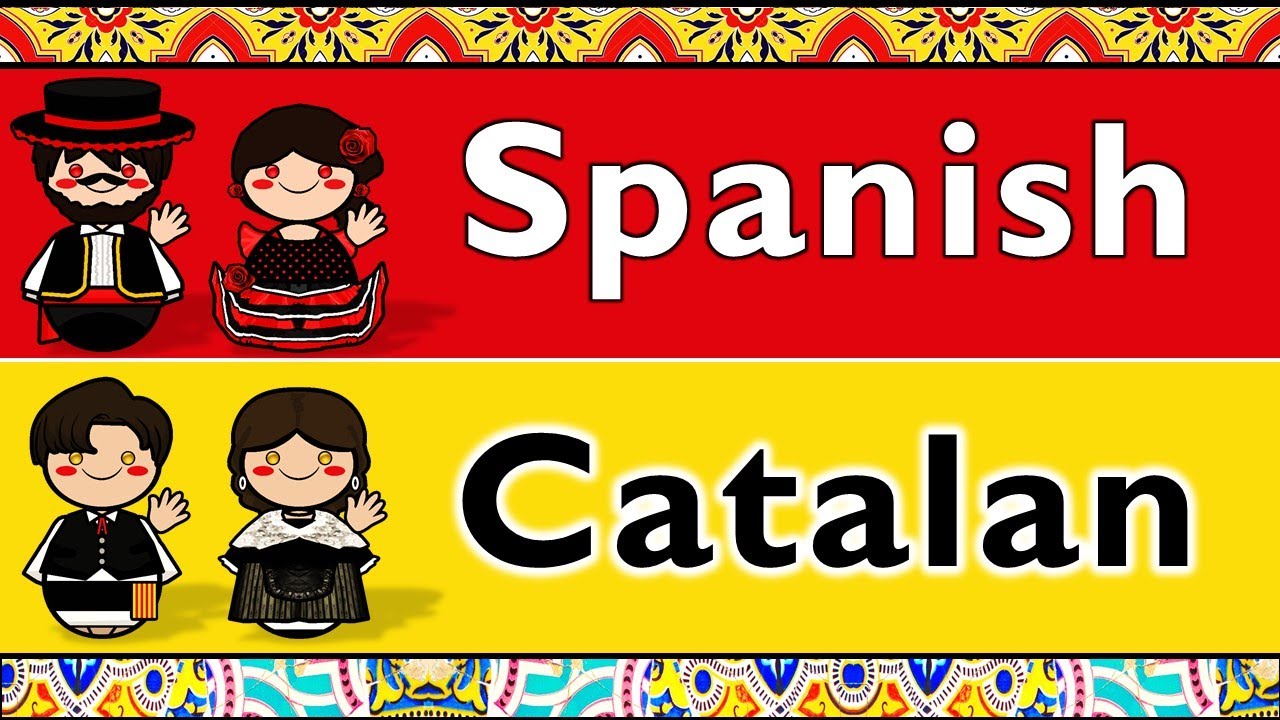Home>Language and Grammar>The Surprising Difference Between Vamos And Vamonos!


Language and Grammar
The Surprising Difference Between Vamos And Vamonos!
Published: February 4, 2024
Discover the nuances of using "vamos" and "vamonos" in language and grammar. Uncover the surprising difference between the two!
(Many of the links in this article redirect to a specific reviewed product. Your purchase of these products through affiliate links helps to generate commission for Noodls.com, at no extra cost. Learn more)
Table of Contents
Introduction
Language is a beautiful tapestry woven with words that hold unique meanings, nuances, and cultural significance. In the vibrant landscape of the Spanish language, two words, "vamos" and "vamonos," stand out as intriguing examples of linguistic diversity. While both words convey the idea of "let's go" or "we go," they are used in different contexts, each carrying its own subtle shades of meaning.
In this article, we will embark on a fascinating journey into the world of Spanish language and explore the surprising difference between "vamos" and "vamonos." By delving into their distinct usages and cultural connotations, we will unravel the intricate web of communication that enriches the Spanish-speaking world. Join us as we unravel the mysteries behind these seemingly similar yet remarkably distinct expressions, and gain a deeper understanding of their significance in the rich tapestry of the Spanish language.
Understanding "Vamos" and "Vamonos"
The Spanish language is renowned for its lyrical beauty and expressive phrases. Two such phrases that often spark curiosity among language enthusiasts are "vamos" and "vamonos." At first glance, both words seem to convey the simple directive of "let's go" or "we go." However, a closer examination reveals a fascinating interplay of cultural, social, and emotional nuances that set them apart.
"Vamos," derived from the verb "ir" (to go), is a versatile and commonly used word in Spanish. It is the first-person plural form of the verb, often employed to suggest collective movement or to invite others to join in an activity. This simple yet powerful word encapsulates the spirit of togetherness and shared experiences, reflecting the communal nature of many Spanish-speaking cultures.
On the other hand, "vamonos" is a conjugated form of the reflexive verb "irse" (to leave). Unlike "vamos," which primarily focuses on the act of going together, "vamonos" carries a sense of departure or leaving, often implying a collective or group exit. This distinction adds a layer of emotional depth to the word, hinting at the shared experience of bidding farewell or embarking on a journey as a unified group.
Furthermore, the use of the reflexive pronoun "nos" in "vamonos" emphasizes the inclusive nature of the action, reinforcing the idea of a collective departure. This subtle inclusion of the reflexive pronoun adds a sense of unity and cohesion, underscoring the communal aspect of the Spanish culture and language.
In essence, while both "vamos" and "vamonos" convey the notion of moving together, they evoke different emotional and social contexts. "Vamos" embodies the spirit of camaraderie and shared activities, inviting others to join in a collective experience. Conversely, "vamonos" resonates with the sentiment of collective departure, signaling a unified exit or journey as a group.
This nuanced interplay of language and culture highlights the richness of the Spanish language, offering a glimpse into the intricate web of social dynamics and emotional nuances embedded within everyday expressions. As we delve deeper into the distinct usages of "vamos" and "vamonos," we gain a deeper appreciation for the profound connection between language, culture, and human experience.
Usage of "Vamos" in Spanish
The word "vamos" holds a central position in the lexicon of the Spanish language, serving as a versatile and widely used expression that embodies the spirit of collective action and togetherness. Derived from the first-person plural form of the verb "ir" (to go), "vamos" encapsulates the essence of communal movement and shared experiences. Its usage extends across various contexts, reflecting the inclusive and sociable nature of many Spanish-speaking cultures.
In everyday conversations, "vamos" serves as a powerful invitation, inviting others to join in an activity or journey. Whether it's a casual outing with friends, a communal celebration, or a shared endeavor, the word "vamos" unites individuals in a collective sense of movement and participation. Its inherent inclusivity fosters a sense of camaraderie and shared experiences, reinforcing the bonds of community and togetherness.
Furthermore, "vamos" embodies the dynamic nature of Spanish culture, where social interactions often revolve around collective engagement and shared moments. From lively gatherings to spontaneous adventures, the word "vamos" infuses the Spanish language with a spirit of unity and companionship, emphasizing the joy of coming together and experiencing life as a cohesive group.
In addition to its social connotations, "vamos" also conveys a sense of encouragement and motivation. When used in the imperative form, it becomes a rallying cry, inspiring others to join in a common pursuit or endeavor. This aspect of the word reflects the uplifting and empowering ethos prevalent in many Spanish-speaking communities, where mutual support and encouragement form the foundation of collaborative endeavors.
Moreover, the flexibility of "vamos" allows it to adapt to diverse situations, from informal gatherings to formal events, seamlessly integrating into the fabric of daily interactions. Its widespread usage underscores its significance as a unifying force, bridging individuals and communities through the shared language of movement and collective engagement.
In essence, the usage of "vamos" in Spanish extends far beyond a simple directive to "let's go." It embodies the communal spirit, fosters inclusivity, and ignites a sense of shared purpose and adventure. As we embrace the multifaceted nature of "vamos," we gain a deeper appreciation for its role as a catalyst for unity and togetherness in the rich tapestry of the Spanish language.
Usage of "Vamonos" in Spanish
The term "vamonos" holds a distinct and evocative presence in the Spanish language, carrying nuanced connotations of collective departure and shared experiences. As a conjugated form of the reflexive verb "irse" (to leave), "vamonos" encapsulates the sentiment of embarking on a journey or bidding farewell as a unified group. Its usage extends beyond a mere directive to "let's go," delving into the emotional and social intricacies that define the Spanish-speaking cultural landscape.
In everyday conversations, "vamonos" serves as a compelling call to action, signaling a collective departure or shared movement. Whether it's a group setting out on an adventure, bidding adieu to a familiar place, or embarking on a journey as a unified entity, the word "vamonos" embodies the spirit of communal departure and collective experience. Its inclusive nature fosters a sense of unity and togetherness, underscoring the interconnectedness of individuals within the fabric of Spanish-speaking communities.
Furthermore, the reflexive pronoun "nos" in "vamonos" reinforces the communal aspect of the action, emphasizing the collective nature of the departure. This subtle inclusion adds a layer of cohesion and solidarity, highlighting the shared emotional and social dynamics embedded within the word. Whether used in casual conversations or formal settings, "vamonos" resonates with a sense of shared purpose and mutual understanding, uniting individuals in the common experience of leaving or embarking on a journey together.
Moreover, "vamonos" conveys a profound sense of emotional connection, evoking feelings of camaraderie, anticipation, and shared sentiment. It reflects the deeply ingrained cultural values of togetherness and collective engagement prevalent in many Spanish-speaking societies, where the act of leaving or embarking on a journey is intertwined with a sense of communal unity and mutual support.
In essence, the usage of "vamonos" in Spanish transcends the simple notion of departure; it embodies the shared experiences, emotional depth, and cultural significance that define the Spanish-speaking world. As we unravel the layers of meaning behind "vamonos," we gain a deeper appreciation for its role as a unifying force, bringing individuals together in the collective tapestry of departure and shared journeys.
The Surprising Difference
The surprising difference between "vamos" and "vamonos" lies in their subtle yet profound divergence in connotation and emotional resonance. While both words convey the idea of collective movement or shared action, they encapsulate distinct social and cultural nuances that enrich the Spanish language.
"Vamos," stemming from the verb "ir" (to go), embodies the spirit of togetherness and communal engagement. It serves as an inclusive invitation, inviting others to join in a collective activity or journey. The word carries a sense of camaraderie and shared experiences, reflecting the communal nature of many Spanish-speaking cultures. On the other hand, "vamonos," derived from the reflexive verb "irse" (to leave), resonates with the sentiment of collective departure or embarking on a journey as a unified group. Its usage evokes feelings of unity, shared purpose, and mutual understanding, emphasizing the interconnectedness of individuals within Spanish-speaking communities.
The surprising difference becomes evident when we delve into the emotional and social contexts embedded within these words. "Vamos" fosters a sense of inclusivity and shared participation, emphasizing the joy of coming together and experiencing life as a cohesive group. In contrast, "vamonos" carries a deeper emotional weight, intertwining the act of departure with a sense of communal unity and mutual support. The reflexive pronoun "nos" in "vamonos" further underscores the collective nature of the action, adding a layer of cohesion and solidarity to the word.
Moreover, the usage of "vamos" and "vamonos" reflects the cultural values and social dynamics prevalent in Spanish-speaking societies. While "vamos" embodies the dynamic nature of social interactions and the spirit of collective engagement, "vamonos" resonates with the profound connection between shared experiences and the emotional tapestry of departure. These subtle yet impactful differences highlight the richness and depth of the Spanish language, offering a glimpse into the intricate web of human emotions and social interactions.
In essence, the surprising difference between "vamos" and "vamonos" transcends linguistic semantics; it encapsulates the essence of shared experiences, emotional resonance, and cultural significance ingrained within the Spanish-speaking world. As we unravel the layers of meaning behind these seemingly similar yet remarkably distinct expressions, we gain a deeper appreciation for the profound connection between language, culture, and human experience.
Conclusion
In conclusion, the Spanish language is a treasure trove of linguistic diversity and cultural richness, as exemplified by the nuanced differences between "vamos" and "vamonos." These seemingly simple words carry profound connotations of togetherness, departure, and shared experiences, reflecting the intricate tapestry of human emotions and social dynamics embedded within everyday expressions.
Through our exploration of "vamos" and "vamonos," we have uncovered the multifaceted nature of language and its profound connection to culture. "Vamos," with its inclusive and inviting nature, embodies the spirit of collective engagement and shared participation, fostering a sense of camaraderie and unity within Spanish-speaking communities. On the other hand, "vamonos" resonates with the emotional depth of collective departure, intertwining the act of leaving with a sense of communal unity and mutual support.
The surprising difference between these words extends beyond mere semantics; it reflects the deeply ingrained values of togetherness, unity, and shared experiences prevalent in many Spanish-speaking societies. Whether used in casual conversations, festive gatherings, or poignant farewells, "vamos" and "vamonos" encapsulate the essence of human connection and the richness of cultural expression.
As we navigate the intricate terrain of language and culture, we are reminded of the universal power of words to convey emotions, forge connections, and unite communities. The distinct usages of "vamos" and "vamonos" serve as a testament to the profound interplay between language and human experience, offering a glimpse into the diverse tapestry of emotions and social interactions that define the Spanish-speaking world.
In the grand mosaic of human communication, every word carries a story, a history, and a cultural significance. "Vamos" and "vamonos" are not just words; they are vessels of shared experiences, emotional resonance, and the collective spirit that binds individuals together. As we embrace the richness of language and the depth of cultural expression, we embark on a journey of understanding, appreciation, and connection, transcending linguistic boundaries to celebrate the universal language of human experience.














